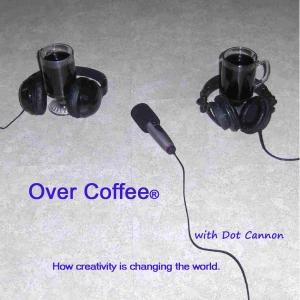Over Coffee® | Stories and Resources from the Intersection of Art and Science | Exploring How to Mak

Challenging Student Imagination
Photo courtesy of NASA/Josh Valcarcel. Image used with permission.
The NASA SUITS Design Challenge is preparing for another school year.
And on the curriculum: a problem to solve. But this is no textbook question.
Instead, students will be creating augmented-reality technology designed to assist NASA astronauts with communication during spacewalks.
"SUITS" is an acronym for "Spacesuit User Interface Technologies for Students". Student teams work together, over the school year, to design AR technology that works inside the astronaut's helmet. But the "problem" aspect: designs must strike a balance. The technology needs to facilitate communication, without distracting astronauts from their tasks in space.
Image courtesy of NASA, and used with permission.
In the course of the SUITS Design Challenge, team members attend an orientation and Virtual Design Review. Selected teams travel to Johnson Space Center, in Houston, to showcase their work.
Participating students must be 16 or older prior to the team's arrival in Houston. Additional eligibility requirements are available on the JSC website.
NASA SUITS Activity Manager and STEM Engagement Strategist Brandon Hargis leads the team of education specialists on the NASA SUITS Design Challenge.
We talked about the creation of the program, what students can expect when they participate and how schools can get involved in the upcoming 2020 challenge.
(Image courtesy of NASA, and used with permission.)
On this edition of Over Coffee® you will hear:
*
What first inspired Brandon to work in space science;
*
How the NASA SUITS Design Challenge began;
*
Brandon's recollections of the first Challenge;
*
How students' perspectives on the first Challenge changed over time;
*
The focus of the upcoming SUITS Design Challenge;
*
The essential elements which a student with more of an "arts" specialty, rather than science, can contribute;
*
Dates and a timeline for the 2020 Challenge;
*
An exciting forthcoming partnership and SUITS-related events, scheduled for September 2019;
*
Some of the considerations involved, in designing for microgravity;
*
Systems teams can use to create in AR (and an alternative if a Hololens is beyond the budget for a team);
*
One of most interesting lessons Brandon himself, as an educator and space-science professional, has learned from the program.






 Visit Podcast Website
Visit Podcast Website RSS Podcast Feed
RSS Podcast Feed Subscribe
Subscribe
 Add to MyCast
Add to MyCast